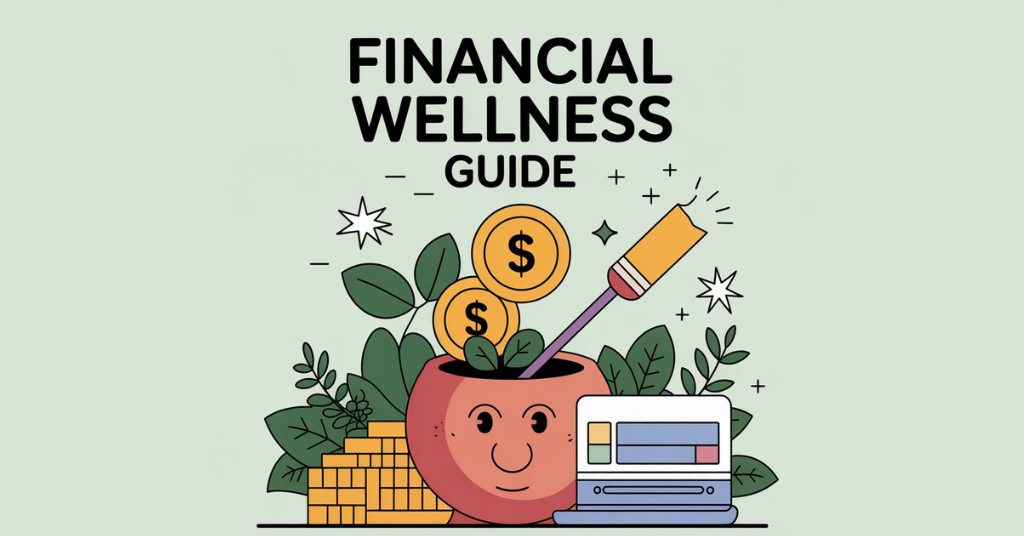The holiday season in the U.S. is filled with joy, shopping, family gatherings, and celebrations. But along with happiness, it also brings financial stress for many households. From gifts and travel to decorations and holiday meals, expenses can quickly spiral out of control. If you don’t plan ahead, you may find yourself starting the new year with debt instead of peace of mind.
That’s why having a holiday finances checklist is so important. It ensures that you prepare for every detail, allocate your money wisely, and avoid last-minute overspending. In this guide, we’ll cover everything step by step—budget planning, gift expenses, travel costs, food, entertainment, credit usage, and post-holiday recovery. We’ll also include examples, calculations, and practical tips so you can apply this checklist to your own holiday budget.
Holiday Finances Checklist: A Guide
1. Start with an Overall Holiday Budget
The first step is to decide how much you can spend in total. Think of your holiday budget as a “big picture” number, and then break it into smaller categories.
Steps to Set a Budget
- List your monthly income.
- Deduct fixed expenses (rent/mortgage, utilities, car loan, insurance).
- Deduct savings goals and emergency fund contributions.
- What’s left is discretionary income, from which you decide the holiday share.
Example Calculation:
- Monthly income: $6,000
- Fixed expenses: $3,200
- Variable needs: $1,200
- Savings: $600
- Remaining: $1,000 discretionary
Now, suppose you decide to spend $1,500 in total on the holidays. This means you’ll need to save an extra $500 from the previous months or adjust current spending.
Pro Tip: Start saving for holidays at least 6 months in advance. If you need $1,500, just set aside $250 per month from June to November.
2. Break Down Your Budget into Categories
Once you have the overall number, divide it into smaller sections. A clear breakdown prevents overspending in one area.
| Category | Suggested % of Budget | Example on $1,500 Budget |
| Gifts | 35% | $525 |
| Travel & Accommodation | 25% | $375 |
| Food & Entertaining | 15% | $225 |
| Decorations & Wrapping | 10% | $150 |
| Clothing & Special Outfits | 5% | $75 |
| Events & Outings | 5% | $75 |
| Buffer (unexpected costs) | 5% | $75 |
This table is just a sample. Your priorities may vary—if travel is a big part of your holiday, increase that portion and reduce others.
3. Manage Gift Spending
Gift-giving is often the biggest expense. To control costs:
- Create a gift list with names and maximum budget per person.
- Use Secret Santa or family gift exchanges instead of buying for everyone.
- Consider homemade gifts or experiences (like baking cookies, photo albums, or a dinner invitation).
- Buy early and look for sales during Black Friday or Cyber Monday.
Example Gift Budget:
- Parents: $70 each = $140
- Kids (2): $100 each = $200
- Siblings (3): $40 each = $120
- Friends (5): $20 each = $100
- Coworkers (Secret Santa): $25
Total gift budget: $585
Compare this to your gift allocation (in our example $525). If you exceed, cut back—maybe spend $80 on parents instead of $100.
4. Travel & Accommodation Costs
Holiday travel can quickly eat up your budget. Always include hidden charges.
Sample Travel Budget for a Family of Four:
| Expense | Cost |
| Flights (round-trip, $300 each) | $1,200 |
| Hotel (4 nights × $150) | $600 |
| Car rental | $200 |
| Airport parking | $100 |
| Meals during travel | $150 |
| Total | $2,250 |
If your total holiday budget is only $1,500, clearly this won’t fit. In such cases, consider road trips, staying with family, or shortening the trip.
Money-Saving Tip: Book tickets early and use travel reward points from credit cards.
5. Food, Dining & Entertaining
Food is central to U.S. holiday celebrations—Thanksgiving dinners, Christmas parties, New Year’s feasts. Without planning, it can drain your budget.
- Make a meal plan: Know how many dinners, parties, or gatherings you’ll host.
- Estimate food cost: Groceries, alcohol, desserts, snacks.
- Include dining out: Holiday brunches or family dinners at restaurants.
Sample Calculation:
- Holiday dinner groceries: $180
- Additional desserts/snacks: $70
- Drinks: $60
- Dining out (2 times, $75 each): $150
Total: $460
6. Decorations, Wrapping & Holiday Supplies
These costs are easy to overlook. Lights, Christmas trees, wrapping paper, and cards add up.
- Set a fixed limit (e.g., $100–$200).
- Reuse last year’s decorations.
- Buy in post-holiday clearance sales for next year.
Example:
- Artificial Christmas tree: $80 (lasts for years)
- Wrapping paper & cards: $40
- Lights & ornaments: $60
- Total: $180
7. Use Credit Cards Smartly
Many Americans rely on credit cards for holiday spending, but interest charges can ruin the joy.
- Check your APR: At 20% APR, carrying $1,000 debt can cost $200+ in interest annually.
- Use cards with cashback or reward points.
- Pay off balances in January to avoid high charges.
Example Calculation:
If you charge $1,200 on a card with 20% APR and only pay $100 per month, it takes 13 months to pay off and costs $130 in interest. Paying the full balance immediately saves that money.
8. Plan for Hidden or Unexpected Costs
Holiday spending rarely goes exactly as planned. Build a buffer of 5–10% of your total budget.
Examples of hidden costs:
- Last-minute gifts
- Extra guests
- Travel delays
- Increased utility bills from lights & heating
If your budget is $1,500, keep at least $100 aside for surprises.
9. Insurance, Travel Protection & Safety
If traveling, don’t forget:
- Travel insurance: covers cancellations, lost luggage, or emergencies.
- Medical coverage: check if your health insurance works out-of-state or abroad.
- Home protection: If leaving your house empty, make sure it’s secure and insured.
10. Track Spending in Real Time
A budget only works if you track it. Use:
- Apps like Mint or YNAB
- Bank mobile apps
- Spreadsheets
Quick Hack: Write down every purchase in your phone’s notes app. At the end of each day, compare against your budget.
11. Post-Holiday Financial Recovery
Once the celebrations are over, don’t ignore your bank account.
- Pay off credit card debt first.
- Rebuild your savings. If you used $500 from savings, put back $100 each month for 5 months.
- Review your spending: Which categories went over budget? Learn for next year.
- Start a holiday sinking fund: Save a fixed amount each month starting January. For a $1,800 holiday budget, save $150 monthly.
Common Holiday Spending Mistakes
| Mistake | Impact | Solution |
| Waiting until December to shop | Higher prices | Start early, shop year-round |
| Ignoring travel extras | Unexpected bills | Include baggage, parking, meals |
| Relying on credit | Debt in January | Save in advance, pay off quickly |
| Forgetting utilities | Shock in Jan bills | Budget for higher heating & lights |
| Overspending on gifts | Debt or regret | Use list, cap per person |
Final Holiday Finances Checklist
Here’s a quick recap of what to include in your checklist:
- ✅ Overall holiday budget set
- ✅ Categories broken down (gifts, travel, food, etc.)
- ✅ Gift list with budget per person
- ✅ Travel booked early with cost estimate
- ✅ Food & entertainment expenses planned
- ✅ Decorations and wrapping limit set
- ✅ Credit card usage strategy
- ✅ Emergency buffer included
- ✅ Insurance and safety checked
- ✅ Real-time spending tracker ready
- ✅ Post-holiday recovery plan
Conclusion
Holidays should be about joy, not financial stress. By following this holiday finances checklist, you’ll be able to enjoy the festive season without draining your wallet. From setting an overall budget and planning gifts to handling travel costs and post-holiday recovery, each step helps you stay on track.
Remember, smart planning today leads to stress-free celebrations tomorrow. Instead of starting the new year with debt, you’ll start with happy memories and financial peace of mind.
So this season, make your budget your best holiday companion—and give yourself the gift of financial freedom.



